Build Quality
As we already know the FSP SFX PRO 450W features an 80mm overhead fan design. Normally, quiet power supplies utilize 120mm or larger overhead fans due to the ability to move a larger volume of air at slower speeds than a smaller diameter fan. However, the FSP SFX PRO 450W is an SFX form factor unit that restricts the size of the fan that can be used. The key criteria in our evaluation, however, is whether or not the cooling solution is sufficient, not necessary its sound level or form factor.
External Build Quality

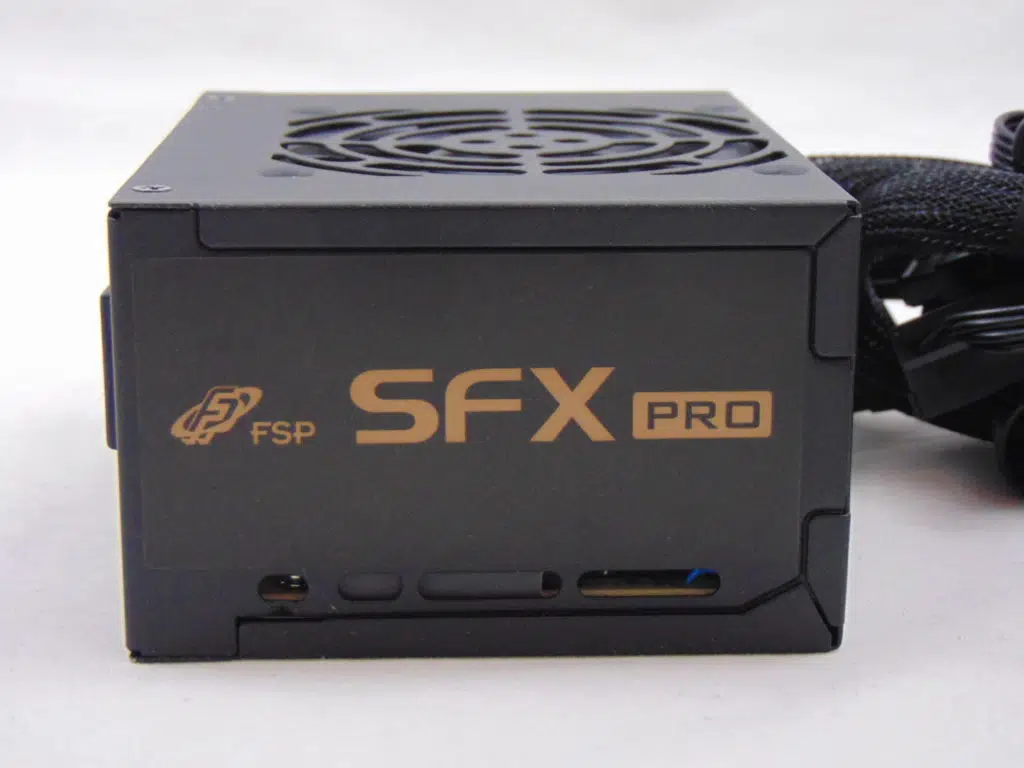
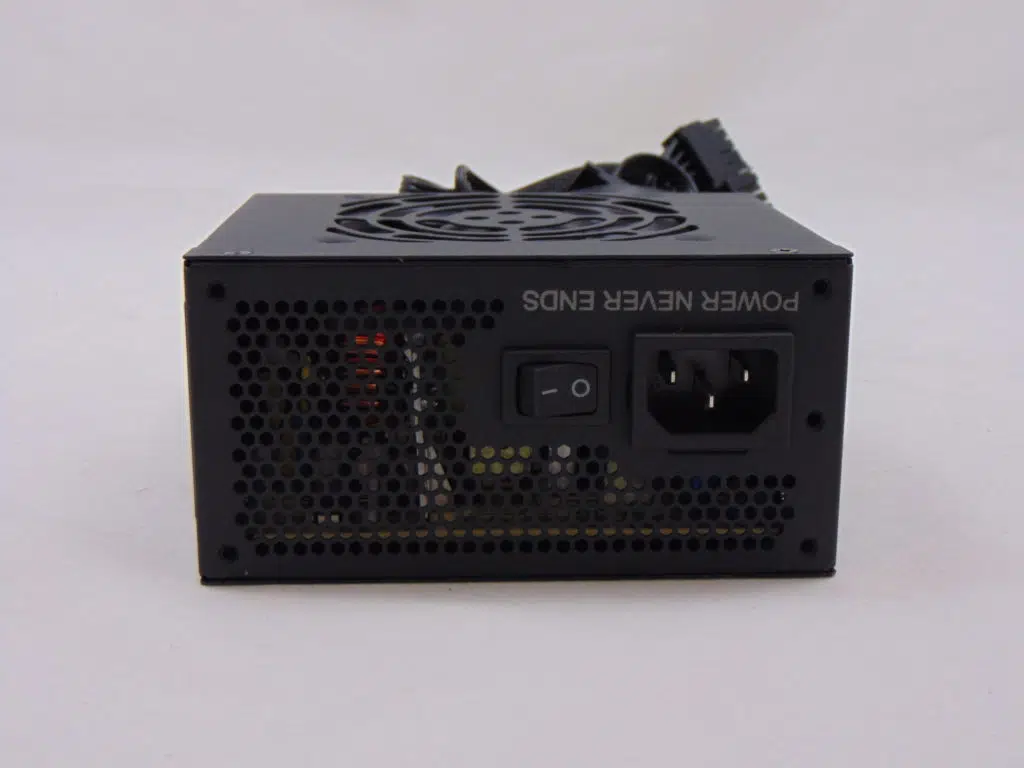

The external build of the FSP SFX PRO 450W differs from what we see from a lot of power supplies due to its size as an SFX form factor unit. Otherwise, it conforms to much of what has become standard among enthusiast power supplies over the last 10 years or so (the layout is standard for a single overhead fan design with APFC and fixed cables) and it is very similar to the much earlier FSP Dagger 600W we reviewed. The finish we see today is a slightly textured black, that should be durable, and the unit carries the FSP SFX PRO branding. The branding is, however, applied via stickers. The fixed wiring exits the housing without the protection of a wire guard.
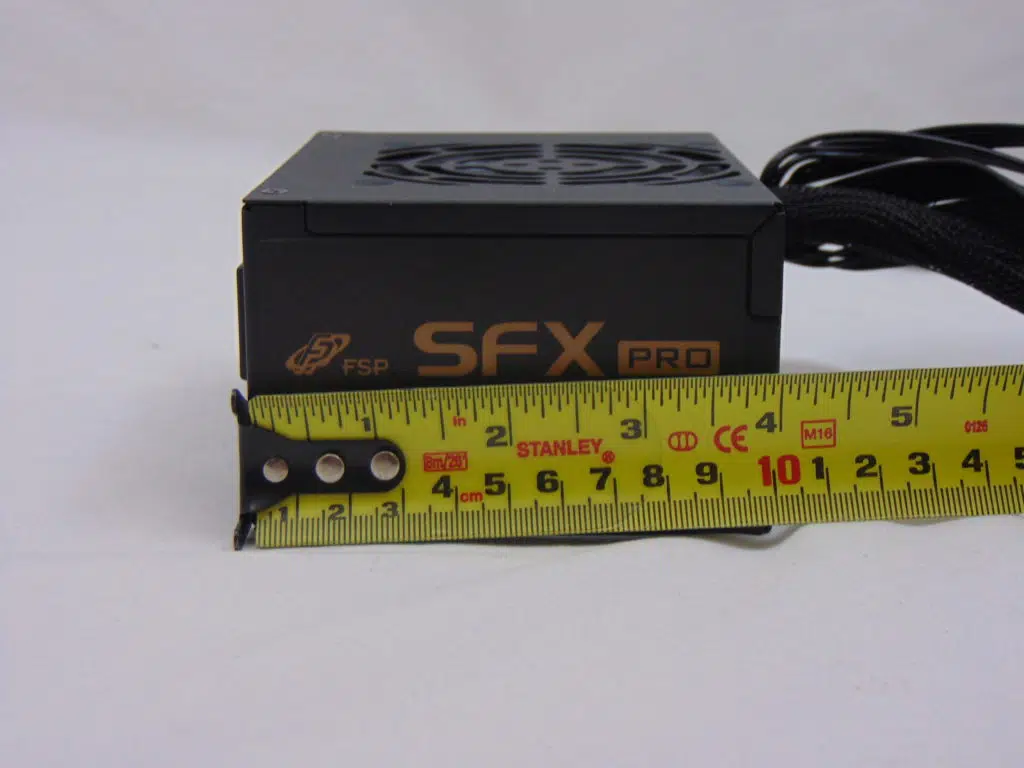

The FSP SFX PRO 450W comes in at a total length of ~4 inches while the cables come in at a length of ~16″ to 2″ to the first or only connector. Additionally, the cables are a mix of standard wire loom and FlexForce style cables.
Internal Build Quality
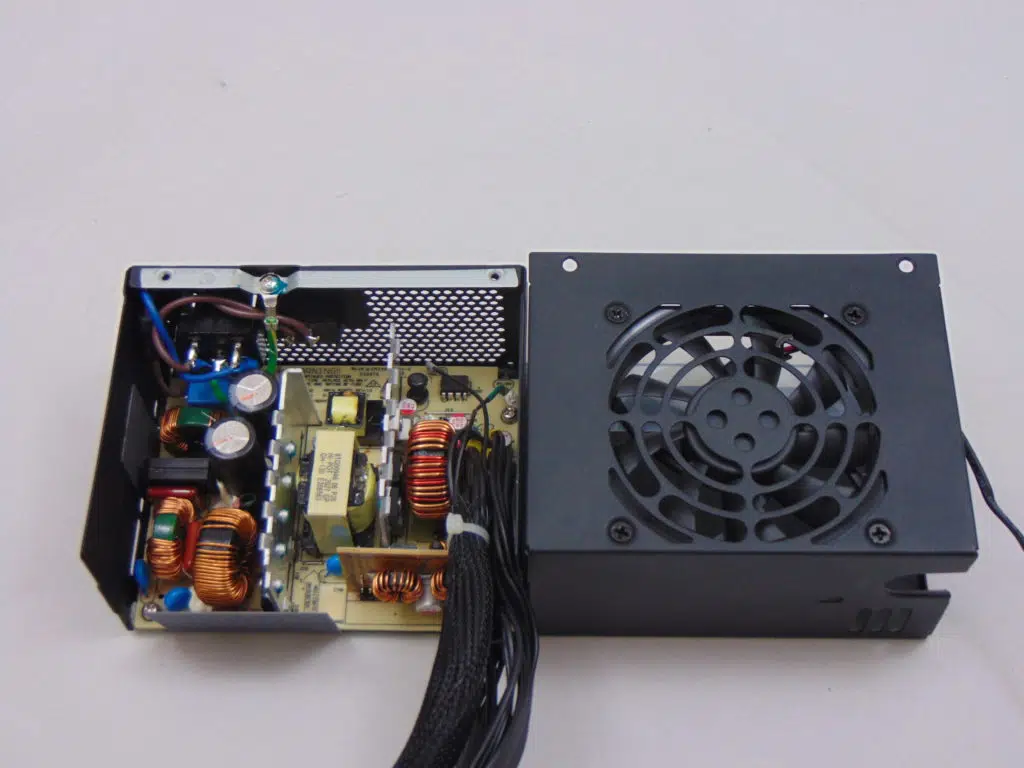

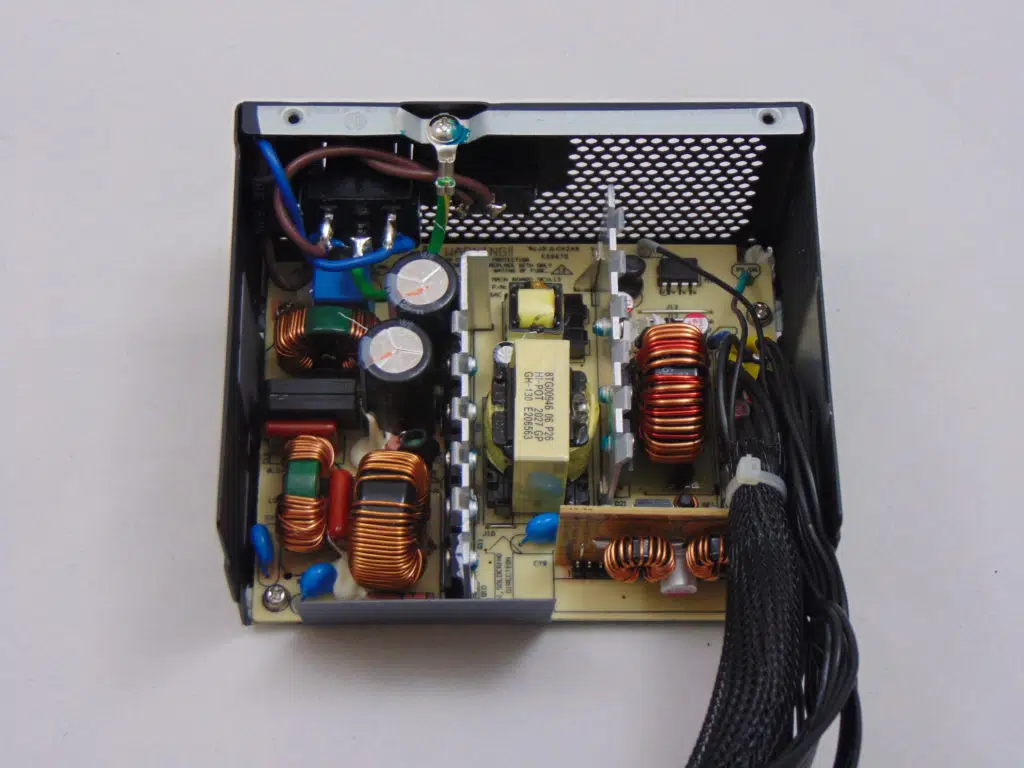
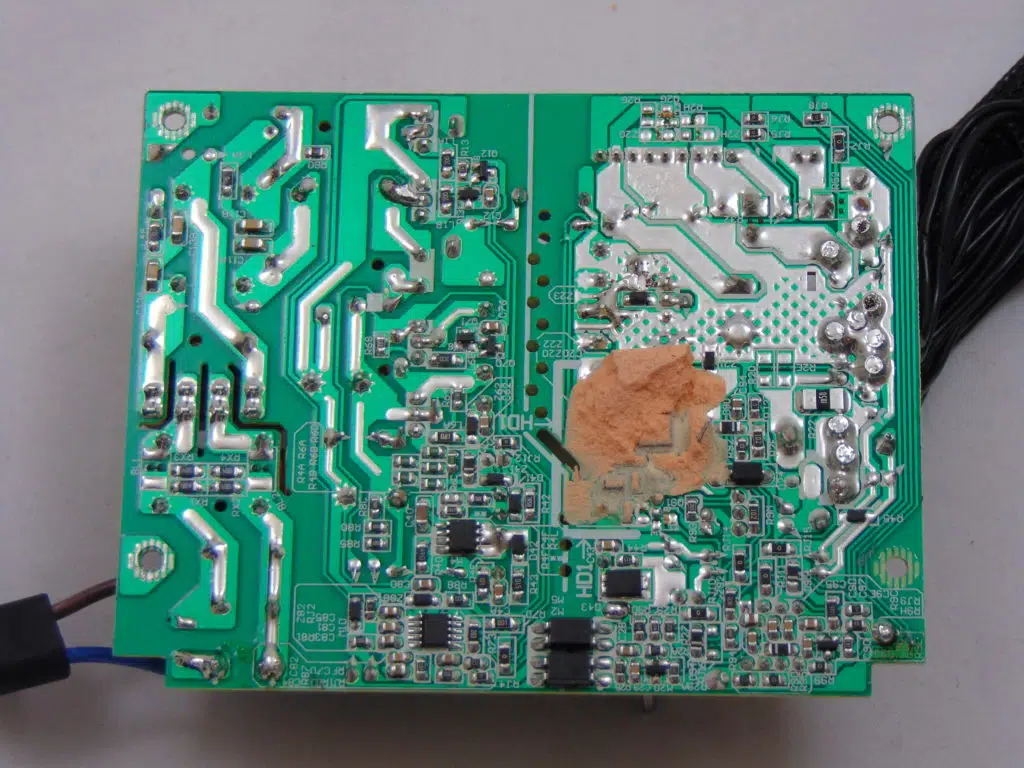
Once we open the top of the FSP SFX PRO 450W, we see a very compact unit that is unique to the models we have seen. The topology is ACRF primary and secondary where we have synchronous rectification with DC-DC VRMs for the minor rails. The heatsink layout is very sparse with what appears to be just two thin heatsinks installed today. The fan coupled with these heatsinks is a rifle-bearing Protechnic fan rated at 0.35A at 12v. When we look at the back of the PCB, we see the 12v MOSFETs here using the housing as an additional heatsink. The soldering on this single-layer PCB is fairly well done.

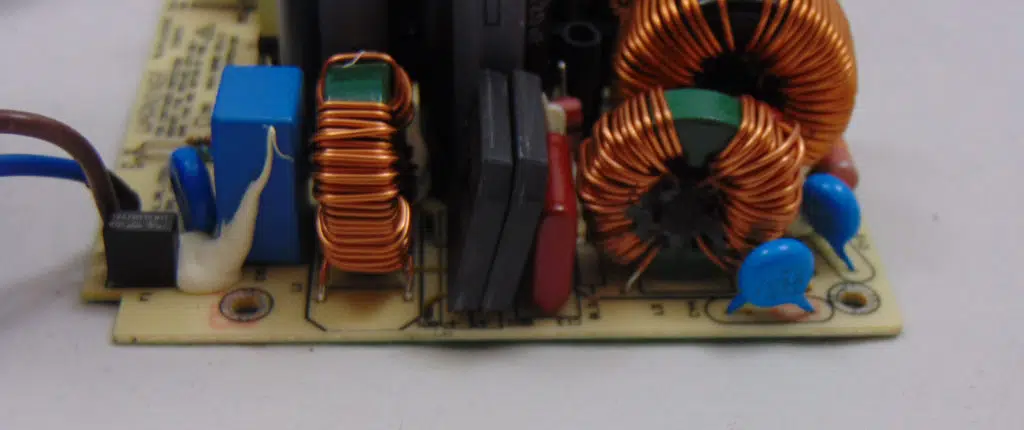
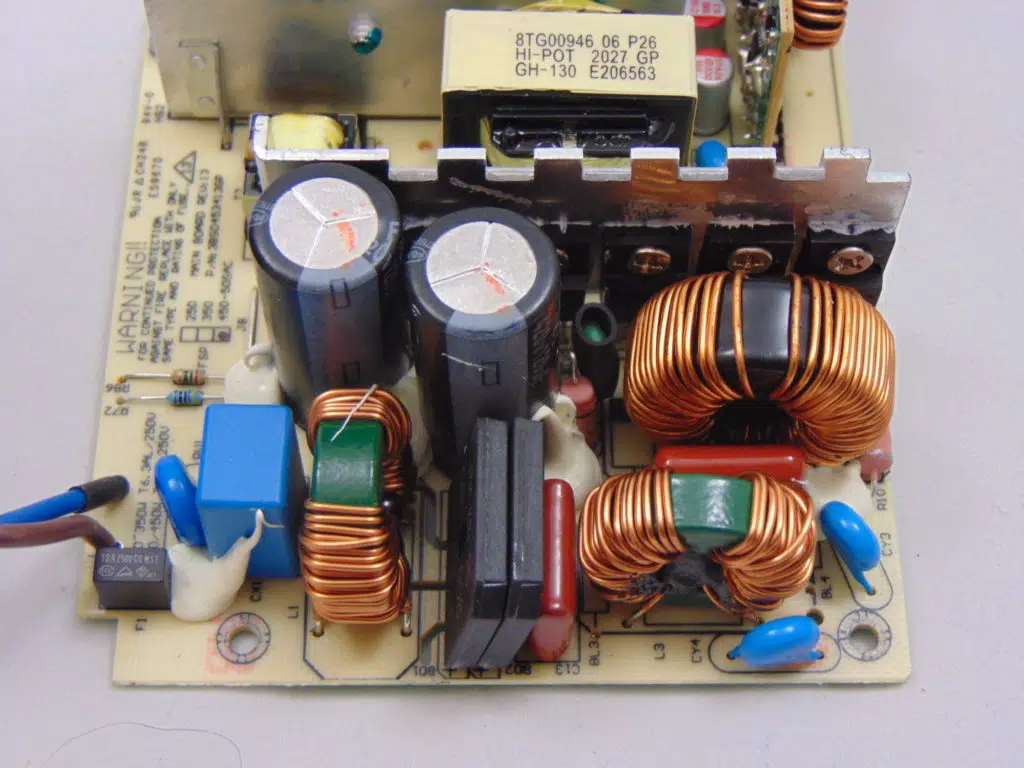

On the primary side, the SFX PRO 450W input filtering begins up on the housing itself with some Y capacitors and then trails onto the main PCB. The bridge rectifiers are next and they are paired but not attached to a heatsink. As we move around to the primary side proper, we find a coil followed by the APFC power components on a heatsink. Also located here, we find the main input capacitors which are provided by Nippon Chemi-con. These capacitors are rated at 420v 120uF 105C.

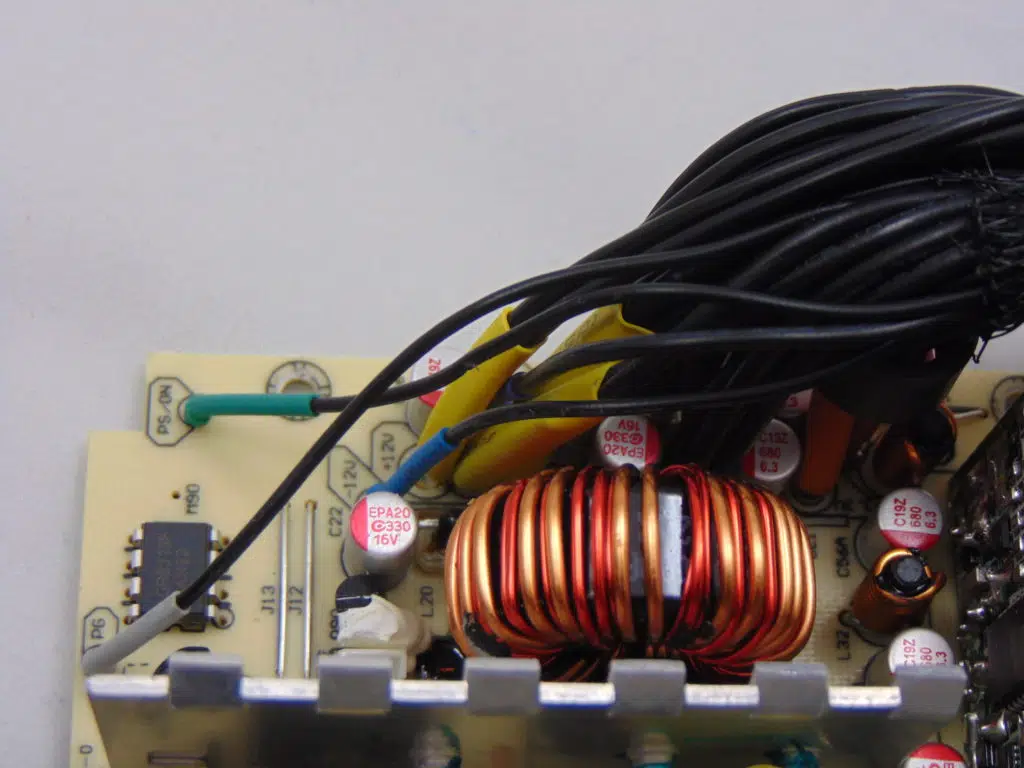
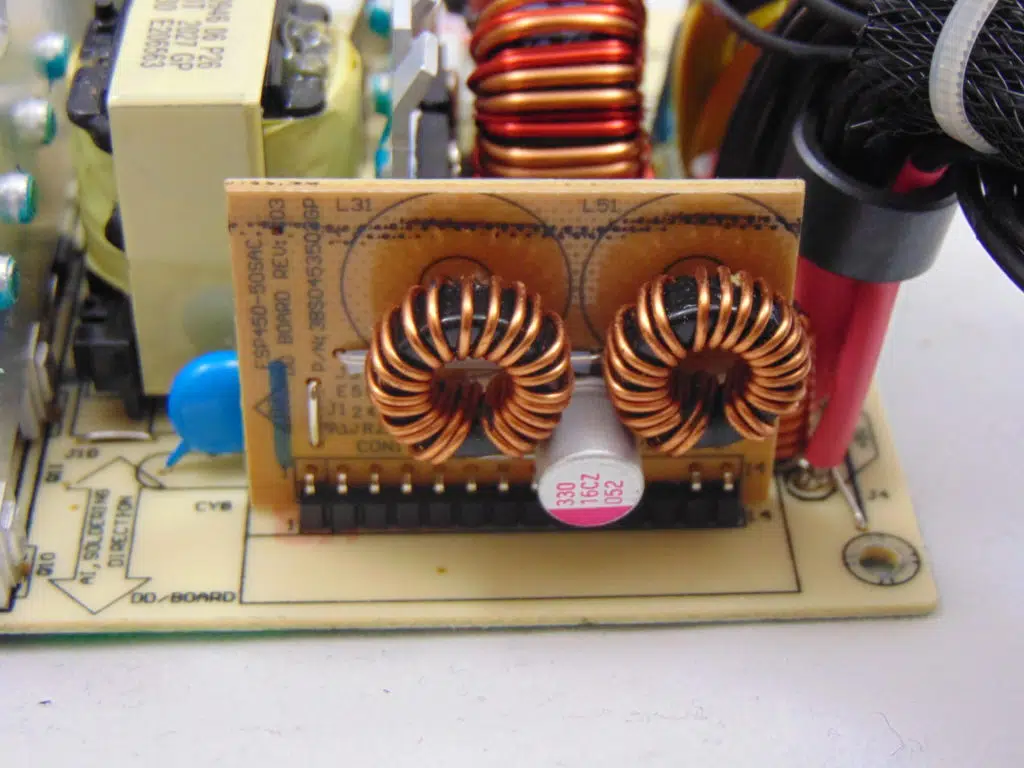
The “secondary side” of this unit is, oddly, not very crowded today. In this area, we find the main transformer and of course the DC-DC VRMs. These VRMs are housed on their own PCB and we see a solid Teapo capacitor populating this PCB. Additionally, there are a few small solid Apaq capacitors scattered throughout the secondary in various places and roles.
Build Quality Summary
Today’s FSP SFX PRO 450W is the second SFX power supply we have seen here at TheFPSReview from FSP. The exterior of this unit is probably as well built as the FSP Dagger 600W we saw minus the modular cables. Some of the actual branding approaches are a bit lower down the quality scale but, ultimately, this seems to fit this unit a bit better than before as even though this unit carries the PRO moniker as it is starting off the day more entry-level than the Dagger. When we move to the interior build quality, we see a modern design that is executed with an eye towards the cost. One area where this unit could use a bit of improvement is the component selection and topology.
Otherwise, the integration is well enough done with such a small form factor. Now, that component selection. The excellent Nippon Chemi-con primary capacitors are the peak today. After that, we get Apaq solid capacitors and then Teapo solid capacitors. Sort of a slow downhill slide there. The fan is a rifle-bearing Protechnic unit that has its pluses and minuses but there certainly are better (and worse) options out there. So, let’s move on now to the load tests and see how this unit does there!
